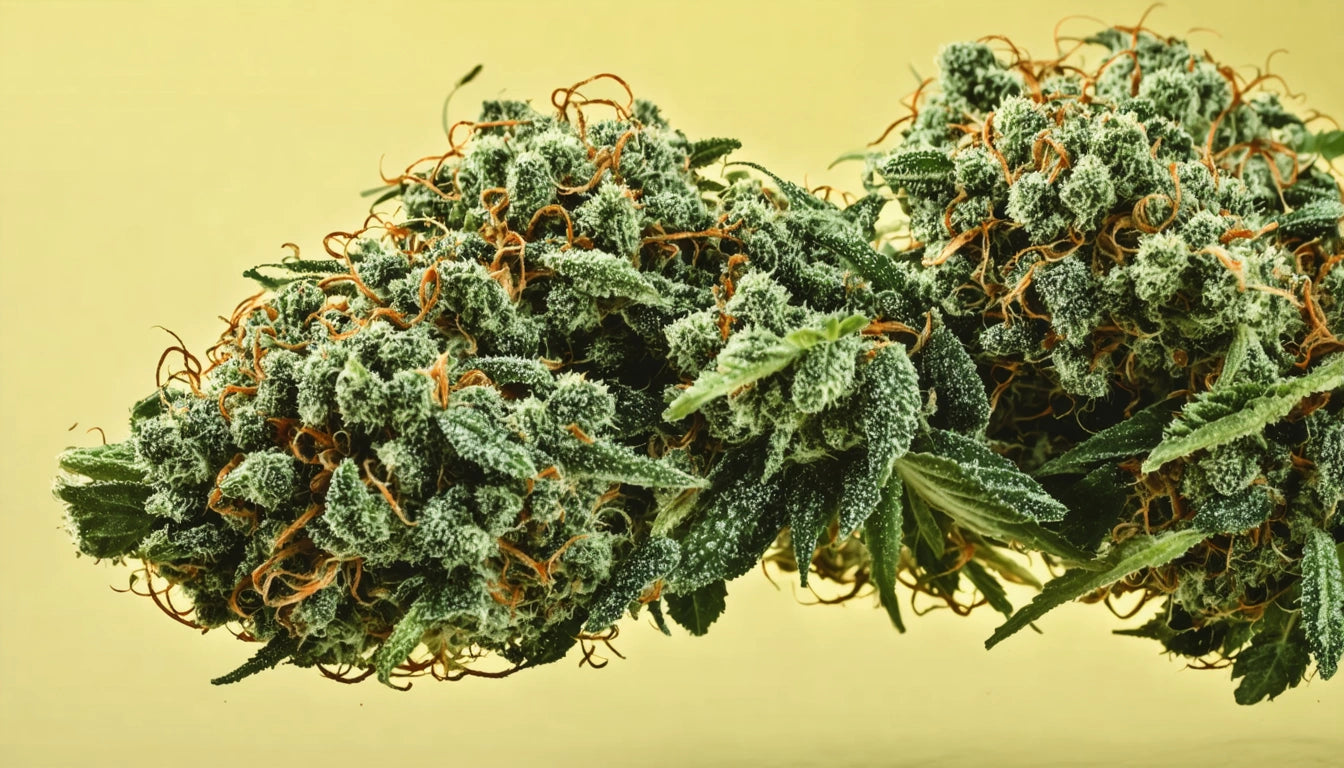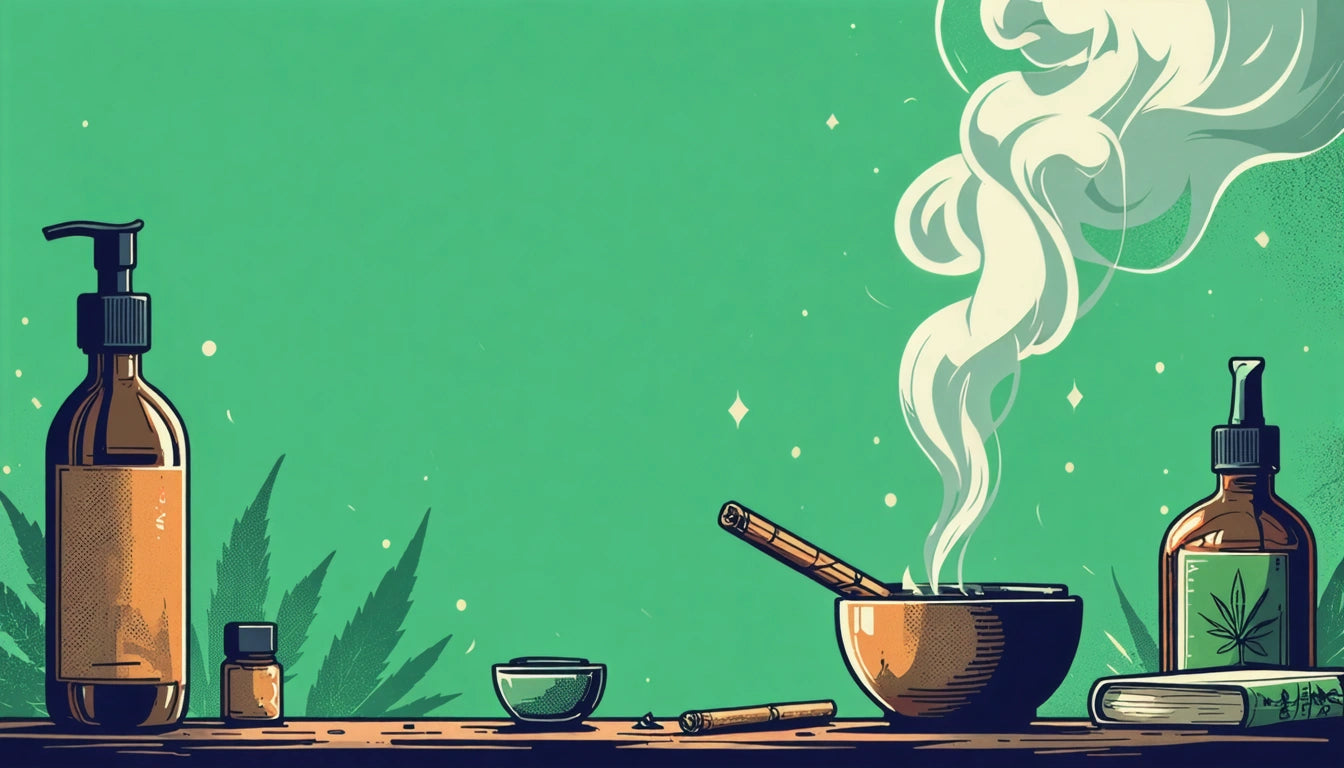Table of Contents
What You Need to Know About Moldy Weed: Identification, Risks, and Prevention
Cannabis enthusiasts and medical marijuana patients alike share a common concern: can weed get moldy? The unfortunate answer is yes. Mold on cannabis not only degrades the quality and potency of your flower but also poses significant health risks when consumed. Understanding how to identify, prevent, and handle moldy weed is essential for any cannabis user.
Identifying Moldy Weed: Visual and Olfactory Clues
Knowing how to tell if weed is moldy can save you from an unpleasant and potentially harmful experience. Here are the key indicators:
Visual Indicators
Mold on cannabis can appear in several forms:
- White, powdery patches that differ from trichomes
- Fuzzy, cobweb-like growth between buds
- Gray or black spots that weren't present before
- Unusual discoloration or dark spots
For a comprehensive visual reference, check out this detailed guide on identifying mold on cannabis.
Smell Test: What Does Moldy Weed Smell Like?
The aroma of cannabis is typically described as earthy, skunky, or sweet, depending on the strain. However, when asking what does moldy weed smell like, watch for these distinctive odors:
- Musty or basement-like smell
- Hay or grass-like aroma (different from fresh cannabis)
- Mildew scent
- Sweet but off-putting smell
While some might wonder if mold can smell like weed, it's actually the reverse – moldy weed develops a distinctive musty odor that differs from the typical cannabis scent profile discussed in this article on cannabis scents.
Health Risks of Smoking Moldy Weed
Many users wonder, "Can you smoke moldy weed?" or "What happens if you smoke moldy weed?" The short answer is that you should never consume moldy cannabis in any form.
When you smoke moldy weed, you're inhaling mold spores directly into your lungs, which can cause:
- Coughing and wheezing
- Chest pain
- Inflammation of the sinuses and lungs
- Nausea and vomiting
- Allergic reactions
For immunocompromised individuals, the consequences can be even more severe, potentially leading to fungal infections in the lungs or sinuses that require medical treatment.
Common Types of Mold Found on Cannabis
Several types of mold can grow on weed:
- Aspergillus: A common mold that can cause aspergillosis, a serious lung infection
- Botrytis (Bud Rot): Appears gray or brown and causes buds to become mushy
- Powdery Mildew: White, powder-like coating on leaves and buds
- Penicillium: Blue-green mold that produces mycotoxins
Each type presents different health risks, but all should be avoided for safe consumption.
How Weed Becomes Moldy: Causes and Timeframes
Understanding how does weed get moldy and how long does it take for weed to mold can help with prevention. Cannabis becomes susceptible to mold when exposed to:
- High humidity levels (above 65%)
- Poor air circulation
- Temperatures between 77-86 °F (25-30 °C)
- Light exposure that creates heat
- Improper drying or curing
As for timing, weed can begin developing mold in as little as 24-48 hours under ideal mold conditions. However, properly stored cannabis in appropriate containers can remain mold-free for months. For more information on cannabis shelf life, refer to this guide on cannabis storage.
Preventing Mold on Cannabis: Storage Best Practices
Proper storage is crucial for preventing mold growth on cannabis. Here are key prevention strategies:
- Store in airtight containers like glass jars with humidity control packs
- Maintain humidity levels between 59-63% using humidity packs
- Keep in a cool, dark place away from direct sunlight
- Use proper packaging solutions like specialized mylar bags designed for eighth quantities that provide better protection against moisture and air exposure
- Avoid plastic bags which can create condensation
- Check your stash regularly for any signs of mold
Investing in quality storage solutions is far less expensive than replacing moldy cannabis or dealing with potential health issues.
Handling Moldy Cannabis: Safe Disposal Methods
If you discover mold on your cannabis, the safest approach is proper disposal. Here's what to do:
- Do not attempt to salvage moldy cannabis by cutting away affected areas
- Never try methods like washing or heating to "kill" the mold
- Seal moldy cannabis in a plastic bag before discarding
- Wash your hands thoroughly after handling
- Clean any containers or surfaces that contacted the moldy product
For growers dealing with mold issues, this resource on eliminating mold from cannabis plants provides targeted solutions.
Understanding that can weed grow mold and taking proactive steps to prevent it ensures your cannabis remains safe, potent, and enjoyable. Remember that proper storage containers, controlled environments, and regular inspection are your best defenses against mold contamination. When in doubt about potential mold, it's always safer to discard the product than risk your health.











Leave a comment
All comments are moderated before being published.
This site is protected by hCaptcha and the hCaptcha Privacy Policy and Terms of Service apply.